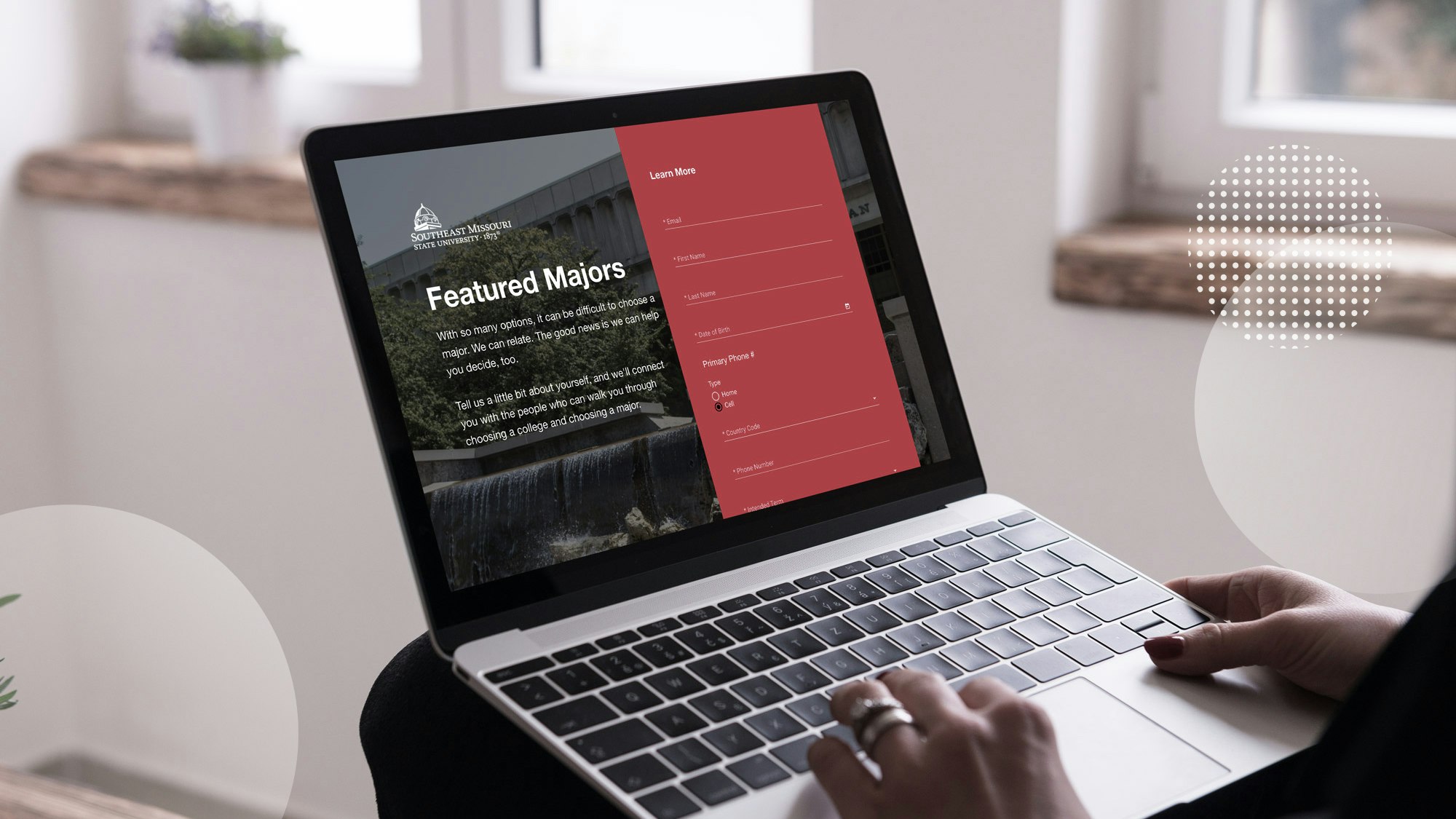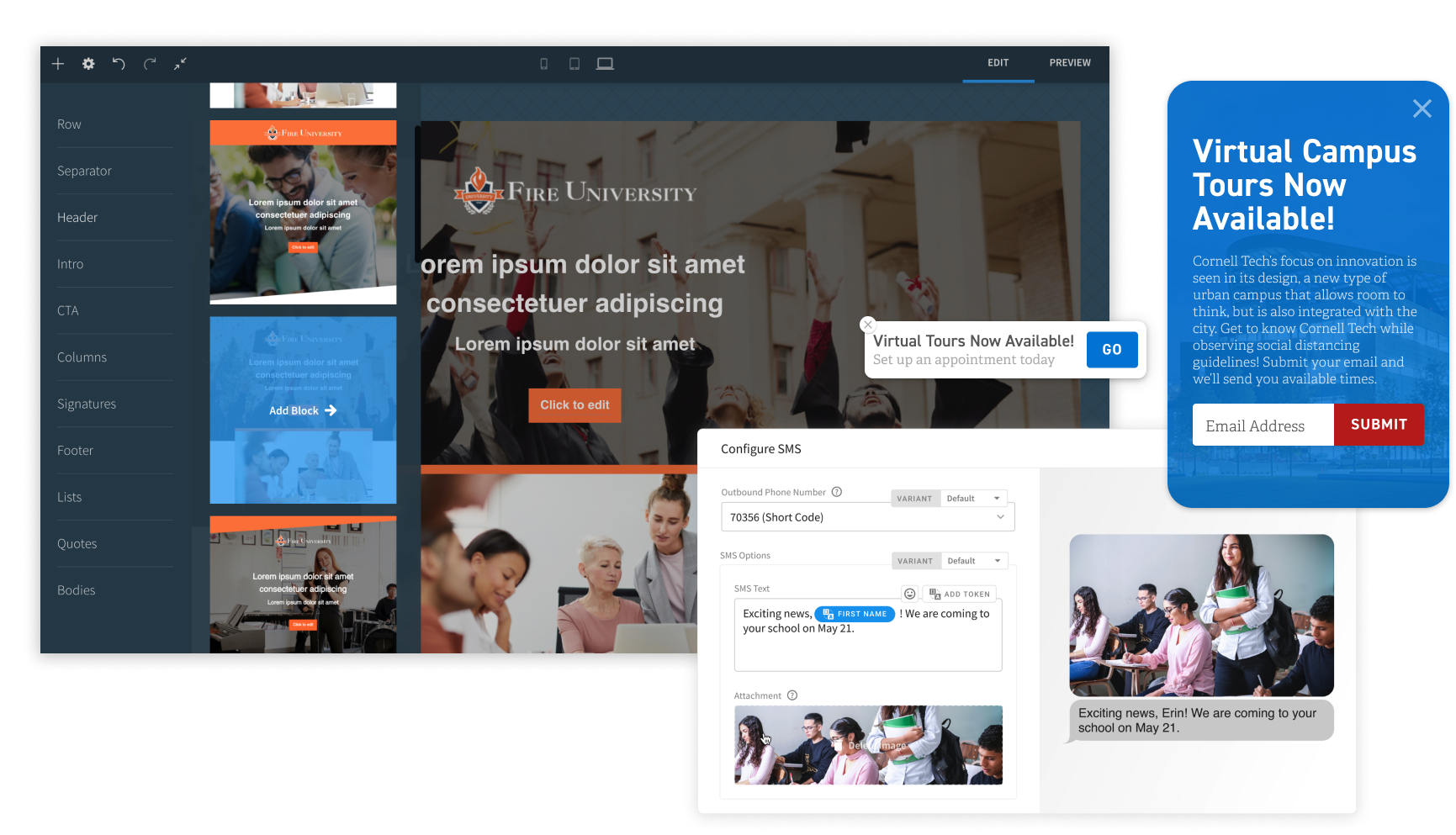What Is Direct Admission? A Strategic Approach to Growth
by Erin Newton · Dec 20, 2024
As a college admissions department, your goal is to get students in the door and enrolled into an academic program that best suits their individual goals. The path to accomplishing this, however, can look different for every institution (as well as every unique student).
What is direct admissions?
The direct admissions process involves giving students a direct—and often immediate—invitation to attend. Some schools are finding success with this strategy because it heads off enrollment gaps and boosts student application numbers.
If your school is weighing the pros and cons of a direct admissions strategy, this post is for you. We’ll cover basic definitions and share the advantages so that you can equip admissions teams with all possible scenarios.

What is Direct Admissions?
Direct admissions is the process of extending an admissions offer to incoming college students based on a simplified application or test score evaluation. This shortened process eliminates some of the extra steps often required, such a series of essays or interviews.
How Direct Admissions Operates
At some colleges and universities, direct admissions may also look like accepting students into a general education program instantly, but reserving their participation in more in-depth academic courses until sophomore year. For example, a pre-med student might be accepted directly into a general education program but still have a more tailored application process to complete before they can begin pre-med coursework.
Comparing a Direct Admission to an "Indirect" Enrollment
An indirect admissions process is typically more drawn out, with a longer timeline and path to entry. Current high school students might apply several terms early, retake test scores (like the ACT and SAT), submit required college essays, or even meet one-on-one with college personnel. For highly competitive schools, developing a relationship with students could be more advantageous to ensuring their success.
But for schools with large enrollment needs, participating in application programs like the Common Application provides a natural bridge to direct admissions, especially for participating high schools.
Admissions Director Jordanna Maziarz of Montclair State University in New Jersey reports, “We’re expecting a population cliff. In order to maintain, we need to achieve a larger market share.” In turning to direct admissions, schools that need to maintain numbers, especially for lower-served student populations, have a way to keep the wheels turning.
How to Apply Direct Admission in High School?
Colleges and universities around the United States are turning to different methods for implementing a direct admissions model. In some cases, the use of direct admissions is part of a state-wide initiative to make higher education more accessible to students of all different backgrounds, particularly in their first year of a new program.
This is the case in Minnesota, which has seen a significant uptick in the number of enrollments from direct admissions. In fact, the state’s Direct Admissions Pilot Program is designed “to make sure all high school students know that they have college options. Through Direct Admissions […] everyone will get a personalized list of colleges and universities that are committed to admitting them.”
In this example, the Minnesota Office of Higher Education leverages direct admissions to connect students with colleges and universities that could be a suitable match. This strategy eliminates some of the doubt for students about whether or not they’ll have higher education options available to them.

Get Your Personalized Demo of Element451
Students want on-demand digital experiences across the student journey. They want every message personalized for their unique needs. Do it all with Element451.
See It in Action
Benefits and Challenges of a Direct Admissions Model
Benefits
A direct admissions model can offer significant advantages to both students and higher education institutions. These benefits address key challenges in traditional admissions processes and help streamline the path to enrollment. Some of the primary benefits include:
Reaching diverse populations – Traditional admissions processes can be a barrier for students from lower socioeconomic or minority backgrounds due to complex requirements and resource limitations. Direct admissions provide these students with immediate opportunities, encouraging them to pursue higher education with confidence.
Bridging the gap for declining enrollments – Many institutions face fluctuating enrollment rates due to demographic shifts. States that have implemented direct admissions programs are seeing improved enrollment figures, helping colleges maintain stability in their incoming classes.
Enrolling high-priority students more quickly – Institutions often have lists of top-tier prospective students. Direct admissions allow for quicker responses and can secure commitments before these students consider other offers, reducing competitive risk.
Filling the admissions pipeline for specialized programs – Direct admissions can help increase the number of students entering specialized academic tracks. By simplifying the initial entry process, institutions can cultivate a larger pool of students for programs that require additional steps or qualifications, such as nursing, business, or pre-law.
Challenges
While direct admissions offer numerous advantages, they also come with challenges that institutions must consider to implement this model effectively. Some of the key challenges include:
Maintaining academic standards – Offering automatic admission could raise concerns about ensuring that students meet the institution's academic requirements. Balancing inclusivity with quality standards requires careful planning and oversight.
Administrative complexities – Implementing a direct admissions model may require significant changes to existing systems, workflows, and technology. Institutions may need to invest in new infrastructure to process offers efficiently and accurately.
Student readiness and retention – Direct admissions can simplify entry, but students who bypass traditional application steps might be less prepared for the demands of college. This could lead to retention challenges if support systems are not in place to help these students succeed.
Limited personalization – A streamlined, direct admissions process may reduce the opportunity for personalized interactions between admissions officers and students. This lack of engagement could impact relationship-building and the overall student experience.
Equity in offer distribution – Ensuring that direct admissions offers are distributed fairly across different schools, regions, and demographics can be challenging. Institutions need to avoid unintentionally favoring certain groups over others.
How to Make an Effective Direct Admissions Strategy?
As with any other strategy, a new admissions process always requires buy-in at every level. To make direct admissions a success, inform the right leadership, in addition to recruiting and enrollment staff members. Provide adequate clarifications and boundaries for how and when direct admissions will be applied.
Additionally, it’s wise to leverage an admissions database or platform like Element451 that offers admissions automation. For example, Element451 engages future students by helping them submit applications quickly, connect with the right staff members, and receive timely reminders and notifications. If you want to encourage direct enrollments, removing possible barriers to entry is one of the best ways to do so.

How Personalization Boosts Enrollment
More than 60 million student journeys inform Element451's AI-first CRM platform. Download the report to learn how to connect with today's students amidst one of the largest shifts in the history of higher ed.
Read the Insights Report
Own Your Admissions Processes
In today’s educational environment, enrolling more students requires innovation. Direct admissions is a new, creative, and inventive way to think about reaching your target audience.
By helping students feel confident about the admissions process, you can work to close enrollment gaps and build a better pipeline of incoming students to fill seats in key programs. At the end of the day, this strategy can be highly impactful (and beneficial) for everyone on your campus.
Schedule an Element451 demo today to learn how you can modernize your school’s enrollment and admissions strategies.
Frequently Asked Questions (FAQs)
What are the types of admissions?
The main types of admissions are:
- Regular Admissions: Standard application process with set deadlines.
- Early Decision: Binding commitment if accepted.
- Early Action: Non-binding early application with early notification.
- Rolling Admissions: Applications reviewed as they are received.
- Direct Admissions: Offers made based on eligibility without a formal application
Does direct admissions guarantee acceptance?
No, direct admissions guarantees an offer to eligible students, but enrollment may still depend on meeting additional requirements, such as confirming interest or submitting necessary documentation.
Is direct admissions a good thing?
Yes, direct admissions can simplify the process, reduce stress, and improve access for underrepresented students. However, institutions need to balance inclusivity with academic readiness and support services.

About Element451
Boost enrollment, improve engagement, and support students with an AI workforce built for higher ed. Element451 makes personalization scalable and success repeatable.
Categories
New Blog Posts

The Definitive Guide
AI in Higher Education
Bridge the gap between the latest tech advancements and your institution's success.
Useful Links
Related Articles

Talk With Us
Element451 is the only AI Workforce Platform for higher education. Our friendly experts are here to help you explore how Element451 can improve outcomes for your school.
Get a Demo








